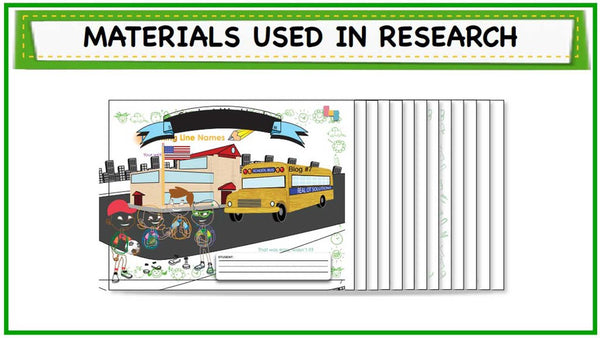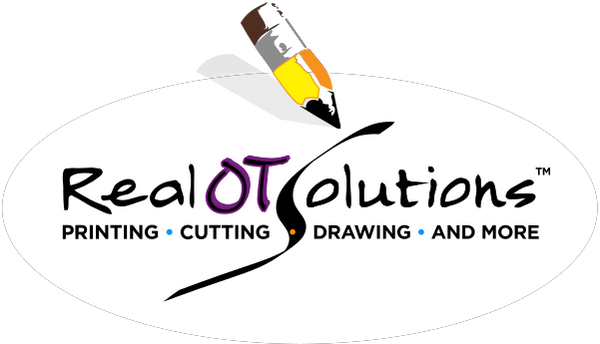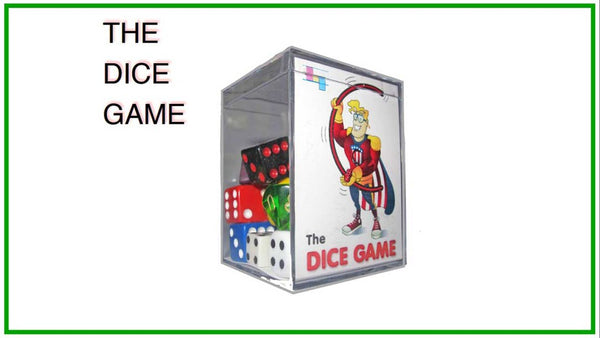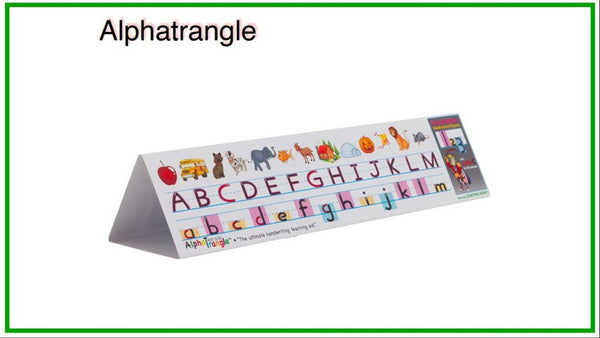In terms of Methodology, this was a 12-week protocol.
Week one was for Baseline Testing.
Week 3 was for Pretesting. It’s important to administer the same tests 2 weeks apart to ensure that there was no sudden surge in skills that would invalidate the tests. Basically, what you’re looking for are comparable test scores because the time period is too short for there to be a difference. And that’s what we found.
That meant that Week 4 was the actual start of the experimental phase. With week 4 as Week 1 of Treatment, Week 5 became Week 2 of treatment, Week 6 was week 3, and so on. That meant that week 11 was actually Week 8 of treatment, the last week of treatment, making this an 8-week (or 40 day) Intervention.
Week 12 then became our Post Test week.
- With only an 8-week intervention phase then, we had to limit the scope. Toward that end, Kindergarten only covered the Upper-Case series. First grade covered the lower-case letters. Second grade did upper and lower case. Nobody did numbers. There just wasn’t time.
- And these were the materials that were used.

This was the Student Workbook given to the Kindergartners. There were a lot of warm-up learning exercises…
- That prepared students for the actual practice pages. In fact, the practice pages had 10 different learning activities on them. We’ll analyze these further as we cover the Key Concepts.
- All in preparation for the Practice Pages that look like this. Right now, I just want to show you the materials. We talk more about how the program works when we get to the Key Concepts, and certainly in Part 2—the Application section. Just know that this was the workbook given to the Kindergartners.
First and second grades got the The Magnetic Rectasquare Boards. These 17 X 23” boards have wipe-off surfaces and wipe off magnets. Students opened their texts books to find words to practice. The color scheme is consistent with the three-letter sizes. Students could write either on the board or the magnets once they solved the puzzle. Again, it was all about Letter Size. (Your letters may not necessarily dance across the page!)
- A series of 6 posters were given to each first and second-grade classrooms. These posters were the extent of the visible tangible references the first and second graders had regarding handwriting concepts.
Information about the Key Concepts was illustrated on the posters. Teachers were instructed to give a lesson about the contents on the posters first…. before presenting…. let alone, hanging the posters.
- Here are samples of the adapted writing paper. The difference between the top and bottom lines gets smaller as you go higher in grade level.
Note that the adapted writing paper has a thicker bottom line since stopping is harder than starting. All the adapted writing paper has a dotted middle line. I’m a fan of structure. Until kids are able to visualize the half-space on their own… and that’s a very advanced visual skill—seeing what’s not there—I think it’s important to give them a guideline. And all the adapted writing paper has a larger skip space. A skip space is the space between a set of writing lines. My writing paper does not have a descender line. I actually think that is overkill and ultimately works against the student since it makes the paper look too busy.
Everyone gets The Dice Game. his is the embarrassingly simple yet overwhelmingly powerful motivator that determines both the amount of practice and the amount of repetition. Yes, in the Size Matters Handwriting Program, we have elevated handwriting practice into the world of craps.
The Dice Game is filled with an assortment of 4, 6, 8, 10, 12, and 20 faceted die. The die has different finishes—translucent, speckled, marbleized, iridescent… When it’s time for practice, children as encouraged to pick out a die that is calling their name. Whatever they roll becomes the number of times they have to print that letter or word correctly… i.e. STAR-WORTHY.
Sometimes, I have to remove the 20 faceted die because you could be there all day. But the crazy part is that on more occasions that I can even count, I hear kids saying, right before they roll, give me a six! They are hoping for a high number. I actually have to say to these kids, “Do you know how this game works?”
Listen… my Dice Game come with an assortment of 24 dice. The dice are all different and that adds a measure of uniqueness and fun. But let’s be honest. If you have board games with dice in them, or math units with dice, those dice are just as good. Like I said, this is an affordable program. You can use any old dice you already have to play The Dice Game.
- Lastly, the first and second graders got Alphatrangles. And yes, I said Alphatrangle. We took out an i because we thought it was a long enough word, so essentially, we made up a word.
The Alphatrangle is a virtually indestructible desktop reference. You can’t write on it, you can’t scratch it off and it doesn’t fade. As I’m sure you have already noticed, a lot of teachers no longer put alphabet strips on the ends of kid’s desks. Within a few months of school, most of the strips have already been written on or destroyed.
Besides, the kids aren’t using them anyway. They don’t even know they’re there, other than as a means to file their nails. But the truth is that children need a near point reference. The Alphatrangle angles sound-symbol correspondence and handwriting information into the child’s line of vision so they may actually use it. The color scheme reinforces the letter size concepts. Size one letters are outlined in hot pink or in pink boxes. Size Two are in yellow boxes. Size Three are in blue.
Super C letters in inlined in red. Starting points are noted. The Writing Lines include a thick bottom line, dotted middle line, and a top line. Plus, as an added bonus, they are an exact 12 “with quarter-inch ruler measurements on one of the facets. Children like to use them to measure how long the room is, how tall they are, how many Alphatrangles it takes to fill up a desk…. One of the nice things about the Alphatrangles I tell the teachers is that you can store them in the desk or on the windowsill until you need them. Take them out whenever you do a writing activity. And then return to a storage space when you are done.
So in total, this is what the distribution of materials looked like:
- Everyone got on-site training personally from me.
- Only Kindergarten got a workbook
- Kindergarten and first grade got Alphatrangles.
- First and Second grades got adapted writing paper
- First and Second grades got the Magnetic Rectasquare Board
- They also got the posters
- Everyone got the Dice Game
And everyone got a Fidelity manual. The Fidelity Manual detailed day-to-day lesson plans. I needed to make sure that the Kindergartners in New York were doing the exact same thing as the Kindergartners in Massachusetts. This is also extremely important to do on the chance that anyone would ever like to replicate the study. And if this interests you…Let me know!!







